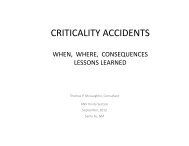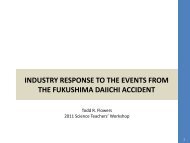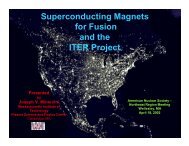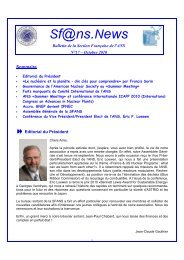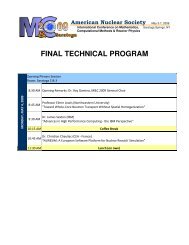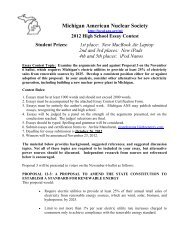DOE-NE-0088
DOE-NE-0088
DOE-NE-0088
You also want an ePaper? Increase the reach of your titles
YUMPU automatically turns print PDFs into web optimized ePapers that Google loves.
Introduction<br />
It is human nature to test, to observe, and to<br />
dream. The history of nuclear energy is the<br />
story of a centuries-old dream becoming a<br />
reality.<br />
Ancient Greek philosophers first developed the<br />
idea that all matter is composed of invisible<br />
particles called atoms. The word atom comes<br />
from the Greek word, atomos, meaning<br />
indivisible. Scientists in the 18th and 19th<br />
centuries revised the concept based on their<br />
experiments. By 1900, physicists knew the atom<br />
contains large quantities of energy. British<br />
physicist Ernest Rutherford was called the<br />
father of nuclear science because of his<br />
contribution to the theory of atomic structure.<br />
In 1904 he wrote:<br />
If it were ever possible to control at will the rate of<br />
disintegration of the radio elements, an enormous<br />
amount of energy could be obtained from a small<br />
amount of matter.<br />
Albert Einstein developed his theory of the<br />
relationship between mass and energy one year<br />
later. The mathematical formula is E=mc 2 , or<br />
“energy equals mass times the speed of light<br />
squared.” It took almost 35 years for someone<br />
to prove Einstein’s theory.<br />
3




